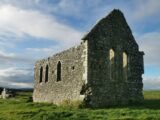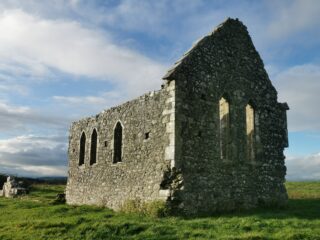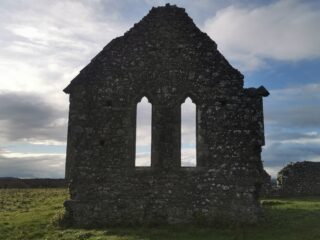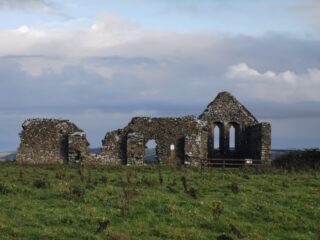Notice
Derrynaflan is a National Monument in state guardianship
*Please be aware there are sometimes livestock in the field surrounding this monument*
WARNING: It should be noted that these sites are unguided and a level of care and caution should be maintained during all stages of your visit. The Office Of Public Works (OPW) will not be held responsible for any damages, injuries, or losses that occur
Derrynaflan Monastic Site
The ancient monastic site of Derrynaflan is a small dry island surrounded by bogland. Founded in the 6th century by St. Ruahan of Lorrhain, originally it was named Doire-Eidnigh: Oak wood of the Ivy. Its present name is associated with two 9th century clerics: Fland mac Duib Thuinne of Dairinis, who died in 821, and Fland mac Fairchellaig, who died in 825. Derrynaflan in Irish is ‘Doire na bhflann’ meaning ‘The Oak wood of the Flanns’. It is believed the monastic site thrived between the 8th and 10th century when it was associated with the Celi Dé movement. As with many prosperous monastic settlements, they became targets of raids by the Vikings. Given that Derrynaflan looks to have gone into decline by the late 9th century, it seems feasible that Viking raids may have played a part in that decline. In the late 17th and early 18th century, a Franciscan friary seems to have occupied the island, but was abandoned after 1724.
The church dates across two periods: the multi-period nave and chancel is built from limestone, the chancel dating to the 13th century. A round-headed Romanesque sandstone piscine, trefoil headed windows and bullaun stone are all found within the chancel. Very little remains of the nave, only a portion of walls and a possible antae.
The Derrynaflan Hoard refers to the five liturgical vessels that were discovered in 1980. It is most likely the items were buried from an incoming sacking and pillaging from either the Vikings or an Irish clan. The items were a silver chalice, known as the Derrynaflan Chalice, a paten known as the Derrynaflan paten, a bronze liturgical strainer, a silver hoop, and a bronze basin, all described as the most important examples of insular metalwork. All are now on display in the National Museum of Ireland.
Visit Historic Environment Viewer for more information on Derrynaflan Monastic Site
Protect our Past - Click here to read about the importance of protecting our country’s unique heritage sites
This national monument is protected in accordance with the National Monuments Acts 1930 to 2014
Gallery
Nearby sites to visit
The Rock of Cashel
The high king of Irish monuments
Approx. 13.6 km from Derrynaflan Monastic Site
Famine Warhouse 1848
The unlikely site of a bloody skirmish
Approx. 14.5 km from Derrynaflan Monastic Site
The Main Guard
A courthouse with centuries of history under its arches
Approx. 27.3 km from Derrynaflan Monastic Site
Cahir Castle
A defensive powerhouse of the thirteenth century
Approx. 28.0 km from Derrynaflan Monastic Site
The Swiss Cottage
An idyllic fantasy of country life
Approx. 29.6 km from Derrynaflan Monastic Site
Kells Priory
Visit Ireland’s largest enclosed ecclesiastical site
Approx. 32.3 km from Derrynaflan Monastic Site




